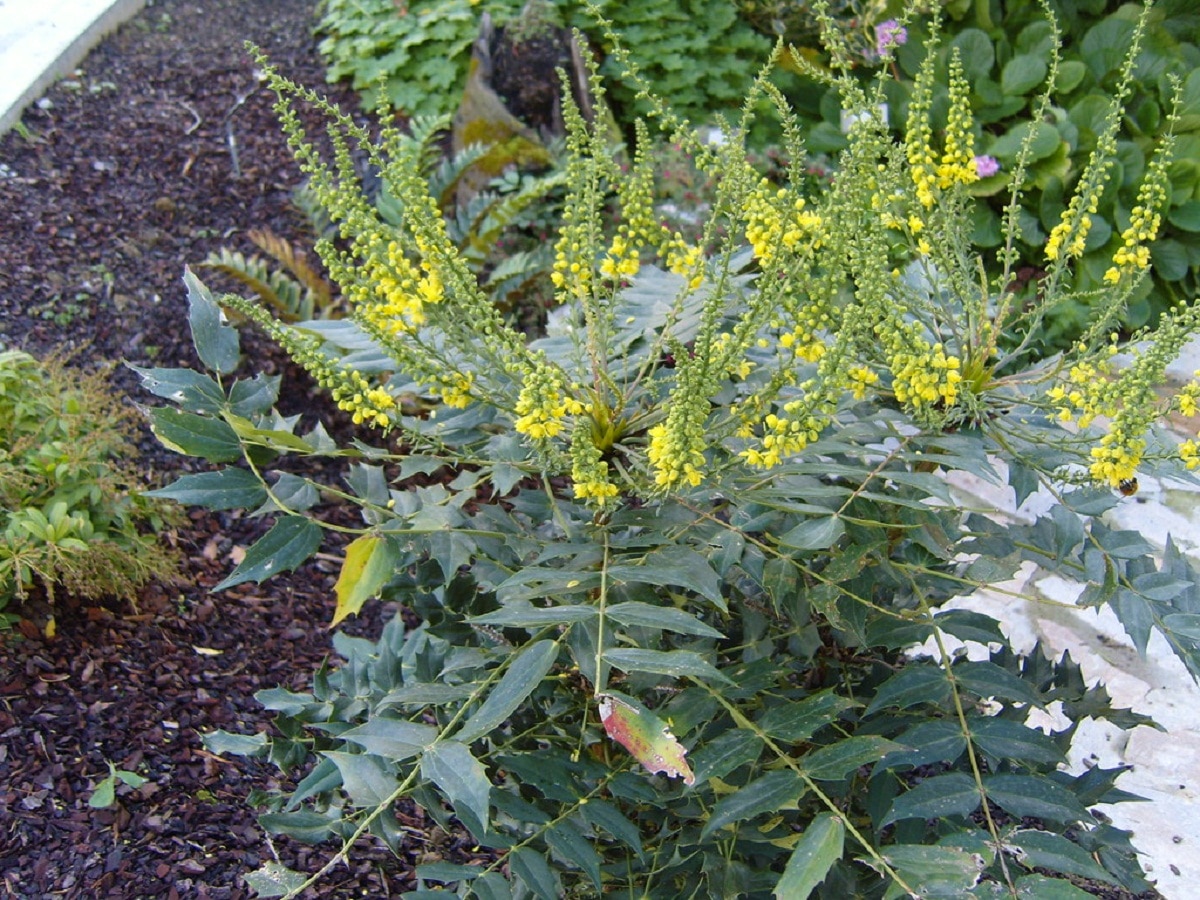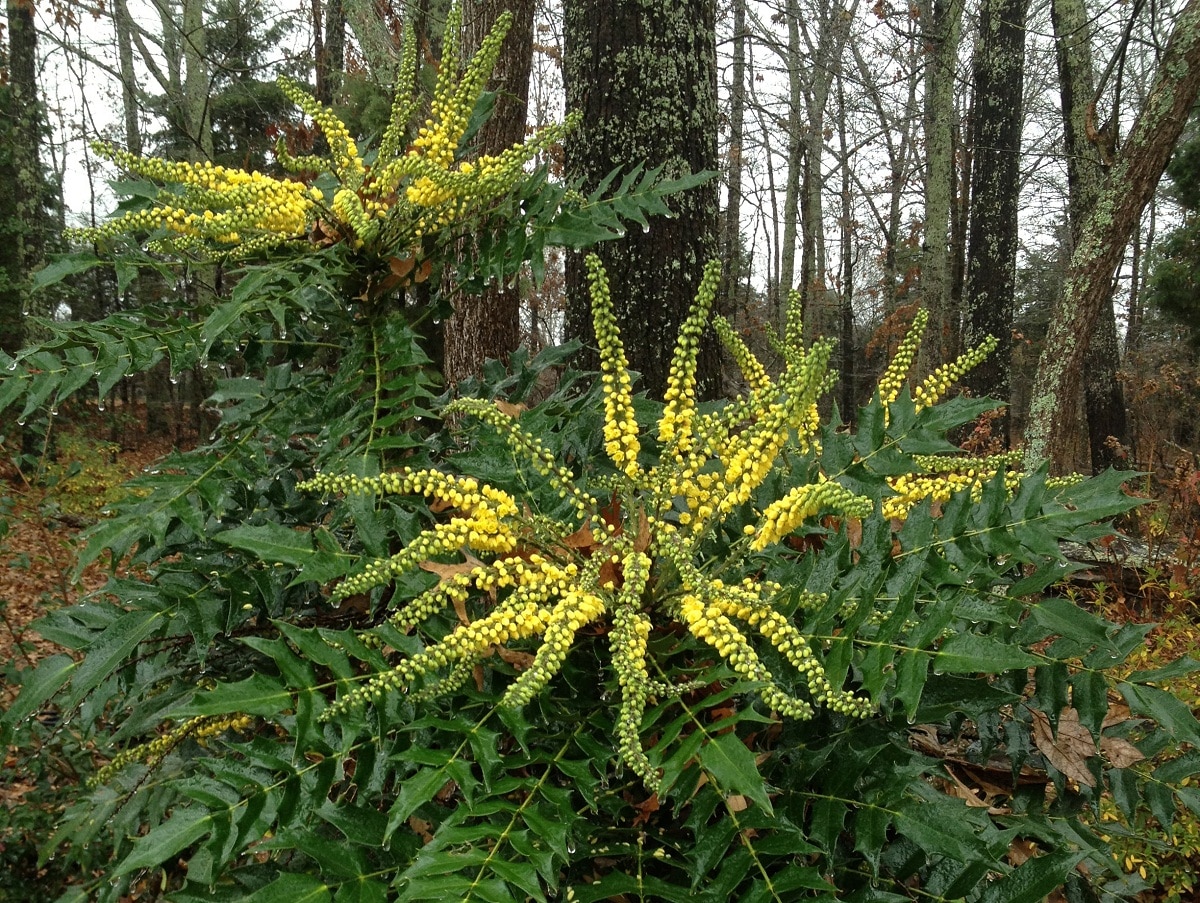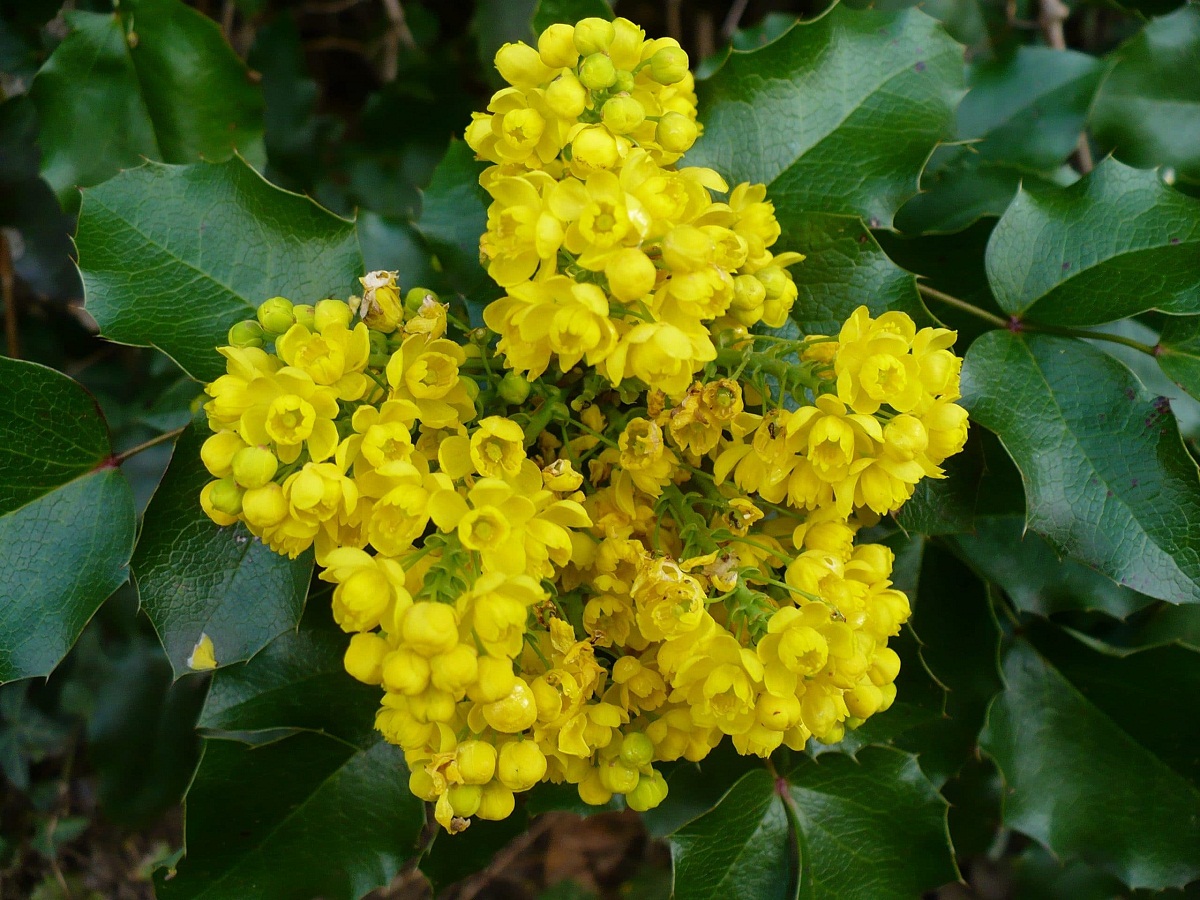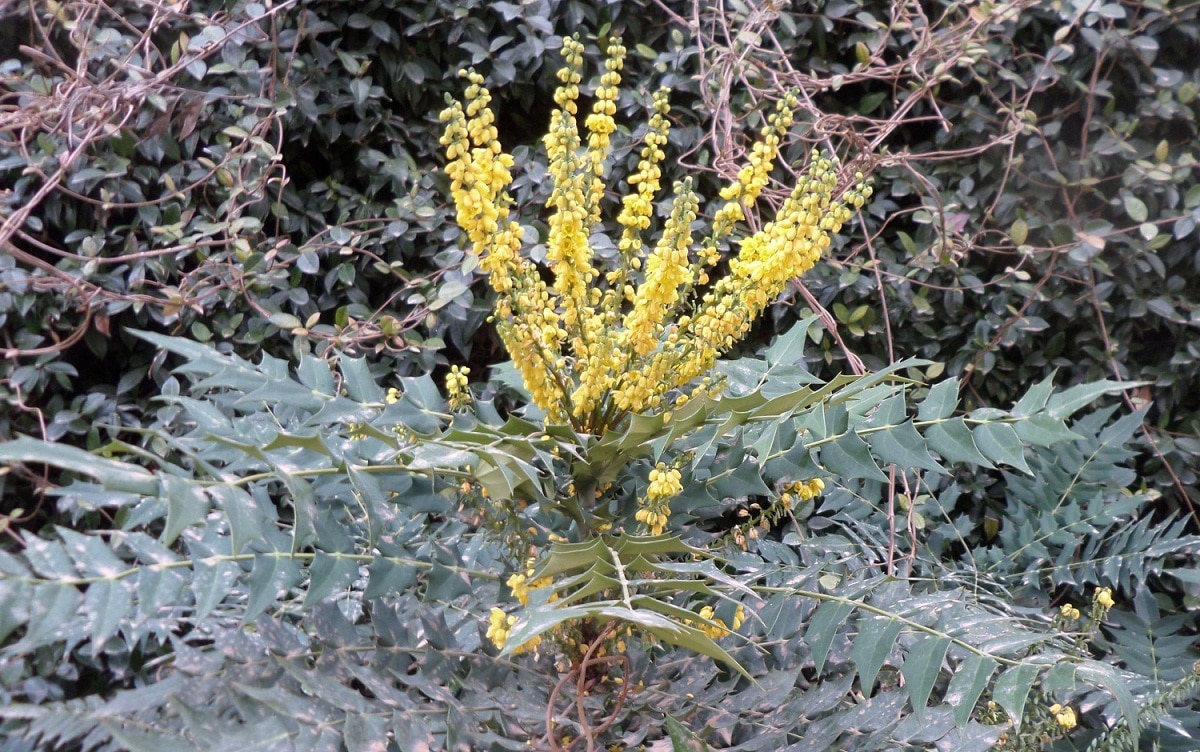
The mahonia is one of those pgeese plants that have the ability to demonstrate their beauty in winter times. One that does achieve it with formidable beauty are the Mahonias. Generally speaking, this is a simply amazing shrub in winter.
Perhaps the most characteristic of this plant are its yellow flowers sprouting from the deep evergreen leaves to turn your garden into a place to admire during the winter.
Mahonia general data

00
The name "mahonia" was chosen in honor of the American botanist Bernard Mc Mahon. The official French name for this shrub is mahonie. This shows the global influence that great botanists have around the world.
The spectacular flowering of the mahonia makes it unot of the rare shrubs that bear these flower bouquets during winter. With his very ornamental look, this spiny, leather-leaved shrub will appeal to anyone not only in winter, but at any time of the year.
And as if that were not enough, the flowers of the mahonias are deliciously scented. They release a honey-like odor that it's even more smelly at night. Perfect for any garden!
Features
Mahonia is not afraid of cold or freezingas it can withstand temperatures down to -20 ° C. The beautiful, typically spiny leaves are divided into leaflets. The showy yellow flowers borne in dense, rounded or spike-shaped clustersat the end of winter or in spring. The flowers are followed by blue, blue-black or red berry-like fruits that attract birds.
This shrub has a rather fast growth rate. So you will have to prune to reduce the size or slow, cutting selected stems to the ground or to a node. Avoid planting too close to walkways and rest areas, where thorny foliage could hook passersby.
The height at which these plants grow is between one and two meters, although sometimes they tend to grow up to 3 meters in height. It does not require a specific type of soil and the foliage of the plant is always green. In fact, caring for this plant from planting to pruning will ensure good growth and beautiful flowering.
Types of mahonia
Mahonia aquifolium

This forest beauty is the Oregon state flower. It is the tallest of the native species, sometimes it reaches up to three meters, although more often in gardens it is kept from 50 to 1 meter in height; erect branches, sometimes slightly arched, covered with the thorniest leaves, a good candidate for a hedge or the back of a garden bed.
Give it some space, because tough rhizomes can cause it to spread into a richly textured perennial scrub which is a wonderful protection site for birds. The effects of cold, sun, and even age will turn the leaves into shades of red to almost purple, providing a rich tapestry of color when joined by the bronze-red color of their new growth, the bright yellow of the flowers, and the berries dark blue.
Does not need the cares that another bush may have. It can easily withstand dry shade under large trees, although it also tolerates wet conditions (not wet). It can grow in full sun, but it will suffer if some shade is not given in hot summers, even with more regular water.
Features
- Native to the British Colony in northern California.
- Grows up to 1.80 meters or higher; spreads through underground stems up to 1.70 meters wide.
- Young growth is reddish or tan; scattered ripe red leaves.
- Spring flowers in 7 cm groups along the stems; edible blue-black fruit with a dusty coating (makes good jelly).
- Purple or tan leaves in winter, especially in the Upper South or where plants grow in full sun.

mahonia japonica

La mahonia japonica is a medium-sized, upright, evergreen shrub with large, spiny, leathery leaves, with small, fragrant light yellow flowers, spreading or falling in sprays from late fall to early spring, followed by bluish-black berries.
It grows in any well-drained or humid soil but a soil with a good water drainage system must be ensured and place it in shade or partial shade. It is good for a forest setting or spacious gardens.
The form of propagation of this mahonia is by means of seeds and cuttings of semi-hard wood. You can grow it both in large or wide pots, as in the soil or substrate of the garden.
Propagation and cultivation
The planting and cultivation process should be done in autumn or spring, so you should avoid frost and high temperatures. If for some reason you are going to plant it in the sun, avoid places that are too hot and if possible, favor the plant with partial sun.
In fact, las mahonias do not require sunlight and will grow perfectly well in the shade. He loves fresh earth with a lot humus. Stacking the plant mulch around it is ideal.
On the other hand, whether it spreads through seeds, cuttings or dividing suction cups, the mahonia has a series of options to multiply it. However, cutting and dividing by suction cups are the easiest and fastest methods.
If the propagation method is by cuttings, these should be done at the end of the summer. The procedure is very easy and is the following:
- Take all those stems that are of new growth.
- Remove the lower pairs of leaves, keeping only the upper pairs on top.
- Take the cuttings and dip them in rooting powder (an optional but recommended step).
- Put the cuttings in a special mixture of cutting soil, under some kind of shelter to avoid direct sunlight.
Care
Pruning is not really necessary but can help thicken the foliage or boost the vigor of your plant. If you want to reduce or balance the bush, you have to do this:
- Prune the mahonia after the blooming season.
- Never cut branches more than ⅓ their length.
- Remove dead or diseased branches.
Irrigation should be regular but with small amounts during the first year, especially if it was planted in spring. After that, the watering is necessary in case of high temperatures or prolonged dry spells and in summer, mulch the base of the shrub to retain a certain level of moisture and also prevent weed growth.